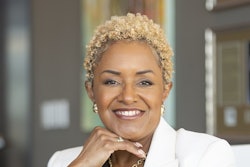Richmond, Va.
John White doesn’t care if his university football
team wins. He doesn’t pal around with other students in the dorm. He
doesn’t do keg parties.
In his younger days, the fifty-nine-year-old retiree was a
tough-as-nails Army paratrooper. For him, college is not for youthful
hijinks.
White is the kind of student Virginia’s higher education system
increasingly is catering to as colleges and universities adapt to the
demands of global competition, tight budgets, businesses that want
trained workers, and demanding students who want practical degrees that
will help them find jobs.
“I may go back to work someday, and when I do go back into the
workplace I want to be current,” said White, who is studying for a
four-year degree in business management.
When the Organization for Economic Development and Cooperation, the
think tank for industrialized nations, studied higher education,
Virginia’s system was singled out as an example of where other
countries may be headed.
Virginia gives colleges and universities autonomy in hiring,
admissions and requirements. That allows institutions to find a niche
and specialize, as Old Dominion University has done with the
long-distance learning program White is using.
White’s classroom is at Northern Virginia Community College in the
Washington, D.C., suburb of Annandale. But his professors are about 200
miles away at Old Dominion in Norfolk. He watches lectures on
television, does his coursework on a computer, and does his research on
the Internet.
“Our institutions are highly entrepreneurial,” said Gordon Davies,
director of the State Council of Higher Education. “They can respond
quickly to regional demands.”
The Virginia Community College System, with more than 350,000
students at twenty-three colleges spread over thirty-eight campuses
scattered around the state, is a good example. All of the system’s
campuses were interconnected this year with distance education tools.
This is the first year that all the equipment is up and running. As a
result, the system now offers 325 courses through distance learning.
Virginia Western Community College is starting a dental hygienist
program that will help alleviate a critical shortage of skilled dental
workers scores of miles away in Danville.
“The training equipment and start-up costs for starting a new
program are very, very expensive,” said Dr. Joy Graham, the system’s
assistant chancellor for public affairs. “This way, not all the
colleges have to buy everything.”
Instead of building new training labs, some of the colleges plan to
partner with local health agencies–and even individual dental
clinics–to provide students with lab space.
Other innovations include: mobile computer labs; classes at work,
right after shift changes; classes at 7 a.m. which commuters can take
on their way to work; and weekend classes.
The state’s colleges and universities also are forging links with
businesses to train technologically savvy workers. One success story is
Northern Virginia Community College, which trains students for the
high-tech industries clustered in the Virginia suburbs of Washington.
The college even sends instructors directly to the workplace.
“We are extremely flexible,” Graham said. “We provide access to the
education our citizens need–whether they’re in metropolitan Alexandria
or small-town Big Stone Gap.”
Jan Cienski writes for The Associated Press. Black Issues in Higher
Education staff writer Scott W. Wright also contributed to this report.
COPYRIGHT 1997 Cox, Matthews & Associates
© Copyright 2005 by DiverseEducation.com


















